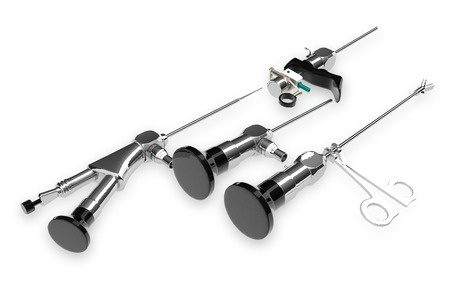 Hysteroscopy is a procedure that uses an instrument called a hysteroscope to examine the cervix and inside of the uterus. It is done to identify and treat abnormal vaginal bleeding or other gynecological conditions.
Hysteroscopy is a procedure that uses an instrument called a hysteroscope to examine the cervix and inside of the uterus. It is done to identify and treat abnormal vaginal bleeding or other gynecological conditions.Hysteroscopic Procedure
A gynecologist typically performs hysteroscopy to determine the cause of abnormal vaginal bleeding. The procedure may be done in your OBGYN’s office or at a hospital under general or local anesthesia.
Following the administration of anesthesia, the lighted hysteroscope is passed through your vagina, into the cervix and uterus. Your gynecologist will use a speculum to hold the vagina open while the hysteroscope is inserted. Once the hysteroscope is passed through the cervix, a liquid is used to expand the uterus. This allows the uterine cavity and openings of the fallopian tubes to be carefully examined.
During the hysteroscopy, a biopsy or other procedure may also be performed, if necessary.
Reasons for Hysteroscopy
The most common reason for performing hysteroscopy is abnormal vaginal bleeding. Hysteroscopy may also be used to identify or treat:
Adhesions – scar tissue that develops in response to previous infections or past surgeries
Polyps or fibroids – non-malignant growths
Miscarriage – may help determine a cause for repeated miscarriage
Uterine malformation – can identify uterine abnormalities such as uterine septum
Displaced intrauterine device – may be used to locate a displaced intrauterine device
Hysteroscopy may also be used to perform sterilization using small implants that are inserted into the fallopian tubes for permanent birth control.
Recovery from Hysteroscopy
Most patients are able to return home shortly after the hysteroscopy procedure. If general anesthesia was used, you will not be released until the effects have worn off.
Mild cramping and bloody vaginal discharge are normal and may be present for a few days after hysteroscopy is done. Fever, chills, severe pain and heavy vaginal bleeding are NOT normal and should be reported to your gynecologist immediately.
Risks of Hysteroscopy
Hysteroscopy is a safe procedure and complications are rare. Risks include: injury of the uterus or cervix, complications of anesthesia, infection and scarring. These adverse reactions are not common and most patients experience no difficulties with hysteroscopy.
